Welcome to the kick-off for my Everest 2024 coverage! This season will be my 24th season of all things Everest: 18th time providing coverage, another four seasons of climbing on Everest, and two years attempting Lhotse.
I summited Everest on May 21, 2011, and have attempted Everest three other times – 2002, 2003, 2008, and Lhotse in 2015 and 2016. I did coverage for 2004, 2005, 2006, 2007, 2009, 2010, 2012, 2013, 2014, 2015, 2016, 2017, 2018, 2019, 2021, 2022, 2023 and now the 2024 season. In 2020, when Everest was closed due to COVID-19, I did a fictitious Virtual Everest series that’s available as an e-book.
If you are one of my millions of regular readers, hello again; if you are new, welcome! My goal is to provide insight and analysis of the activity without favorites or agendas. I write my posts using sources directly from the mountain, public information, and my own experiences.
I usually post daily as the season gets started in early April and ramp up to almost hourly coverage during the intense summit pushes in mid to late May. I spend several hours a day creating these updates. You can sign up for (and cancel) email notifications on the lower right sidebar or check the site frequently.
Why do I do this? Well, one word: Alzheimer’s. I lost my mom, Ida, and four aunts to this disease, which changed my life forever. You can read more at this link. I hope you enjoy my coverage and donate to any of my selected non-profit partners or your preference as a tangible thank you. Of course, I never benefit financially from your donations. Just click on this button that is always on the top right sidebar.
I’ve already posted several Everest 2024 big-picture updates for this season:
- Everest 2024: Welcome to Everest 2024 Coverage – an introduction to the Everest 2024 Spring season.
- How Much Does it Cost to Climb Everest: 2024 Edition – My annual review of what it costs to climb Everest, solo, unsupported and guided.
- Everest by the Numbers: 2024 Edition – A deep dive into Everest statistics as compiled by the Himalayan Database
- Comparing the Routes of Everest: 2024 Edition – A detailed look at Everest’s routes, commercial, standard and non-standard.
So, let’s see what 2024 has in store for us.
Big Picture
Big Picture
2024 is the 100th anniversary of the greatest mysteries in mountaineering, if not all sports–the 1924 George Mallory and Andrew “Sandy” Irvine, aka M&I, expedition. The north side was first attempted by a British team in 1922. They reached 27,300′ before turning back. The 1924 British expedition was notable for the mystery of whether M&I summited or not. Both climbers were spotted ascending near the Second Step but disappeared into the clouds, never to be seen again.
Mallory’s body was found in 1999, but there was no proof that he died going up or coming down. Irvine has never been found. Speculation abounds that the Chinese found his body and perhaps the infamous camera they were carrying and kept it secret to preserve their fame of being the first to summit from the Tibet side on May 25, 1960. The summit team included Tibetan Nawang Gombu, Chinese Chu Yin-Hau and Wang Fu-zhou, who is said to have climbed the Second Step in his sock feet. Because of the M&I anniversary, look for several film crews to document the anniversary this year.
The Good News
With lower expedition prices, more people than ever are enjoying mountain climbing. I’m excited to see so many young people try the sport and those a bit older jump in for the first time. Those going to Everest, even just a trek in the Khumbu, Annapurna, or Manaslu circuits, will be treated to amazing sights, a buffet of cultural delights, and life-changing challenges. As I often say, my first visit to Nepal in 1997 changed my life for the better.
Yes, Everest will be crowded, but it’s a big mountain that can handle hundreds of climbers at a time. However, it takes communication and cooperation amongst the guides to prevent overcrowding on any one day.
There are those who feel the golden age of mountaineering has come and gone, and that Everest is now just a tourist trap, complete with escalators and a Starbucks on the summit. However, let me remind you that there are still unclimbed routes on the Big E and ways to climb in “style,” as shown by Jost Kobusch and in 2019 when Cory Richards and Esteban “Topo” Mena made a valiant attempt to send a new route up a 6,551-foot direct line in a couloir, a narrow rock gully, on the Northeast face of Everest. So, if that floats your boat, go for it! See my review of all the routes in Comparing the Routes of Everest – 2024 edition.
The Not-So-Good News
However, with all this opportunity comes a responsibility that few seem to accept. Trekkers, climbers, government, local and community officials, and guide companies must step up to take better care of the environment. This starts with leaving no trace, even a candy wrapper, anywhere but in a trash receptacle. The same goes for solid human waste. Use an inexpensive WAG bag ($3 each or lower, under $1 if your guide buys in bulk) if you cannot find a toilet. That’s critical for those climbing, especially those high on a mountain.
Best Case
The weather is always the wildcard. The best case is predictable weather with sufficient summit days to spread the crowds apart. In 2023, it was a typical year with about two weeks of suitable weather windows, albeit very cold, with summit winds under 30 mph/48kph, but in 2022, the entire month of May saw summits, which I had never heard of! And then there was 2019, with only three suitable days. All of this goes to where climate change has made weather more volatile and unpredictable. The professional meteorologists will have their hands full again this season.
Definitions
Before we get going, let’s define a few terms. I’ll leverage some of what the Himalayan Database uses in its reporting. Refinements to these definitions are welcome:
- Members: anyone who pays to be guided, including those who only use base camp services and climb independently above base camp. More information.
- Hired/Guides: Anyone paid to climb Everest. Hired include Sherpas, Tibetans, and other ethnicities, plus Western guides.
- More information.
- Western: Any member, hired guide or company not based in Nepal or Tibet
- Nepal Side: Nepal’s jurisdiction of Everest’s south side, aka the Southeast Ridge or South Col.
- China/Tibet side: China’s jurisdiction of Everest’s north side, aka the Northeast Ridge or North Col. I usually use Tibet, not China.
- Solo Climber: Anyone who never touches a ladder or fixed rope, carries all their kit, sets up camps, cooks all their own meals above base camp, and is not part of a team and has no support from a teammate or “hired” aka Sherpa or Tibetan. More information.
- Independent Climber: Anyone who is part of a team but climbs alone without Sherpa or Tibetan support. They use infrastructure such as ladders and ropes and the logistics of their team to move from base camp to high camps.
- No O’s: Anyone who never uses supplemental oxygen, including sleeping or during the descent. Less than 3% of all Everest summiteers have not used supplemental oxygen. Of the 327 Everest deaths since 1924, 178 died while not using supplemental oxygen, or 54%.
- Acclimatization: Multiple climbs to ever higher camps, returning to lower camps to sleep to acclimate their bodies to the reduced level of oxygen molecules in the air. More information.
- Pre-Acclimatization: Weeks before arriving on the mountain, the climber will sleep at home in an altitude tent connected to an altitude generator that reduces the percentage of oxygen in the air. Most climbers on expeditions under three weeks, i.e., “Flash or Rapid,” almost always use this technique. Some studies show climbers can acclimate to as high as 7,000 meters. More information.
- Rotation: Climbers use expedition or siege-style climbing to establish multiple camps at ever higher elevations, returning to lower camps to sleep to acclimate their bodies gradually. Today, teams will perform two to five rotations. Some will reduce the number on Everest by climbing lesser peaks such as Lobuche or Island Peak.
- Alpine Style: The mountain is climbed in a single push without O’s, support from other climbers, i.e., Sherpas, and no use of fixed ropes or established camps. There are no “acclimatization” rotations. The climber carries all supplies–food, stoves, fuel, tents, etc. They leave no trace on their route other than footprints. May climb in pairs or a small team. There are virtually no alpine climbs of Everest these days.
- Expedition, aka Siege style: The mountain is climbed in stages, with multiple “acclimatization” rotations to ever higher camps. hired climbers usually stock siege-style Camps, but not always. Steep sections have fixed rope—ladders are placed across crevasses or in vertical sections. Virtually all Everest climbs are in expedition style.
- “Conquering the Mountain“: No one conquers a mountain; they climb it and return home.
- Leave No Trace: Absolutely nothing is left on the mountain from the climb, including solid human waste, oxygen bottles, ropes, tent fragments, rubbish, or anything human-made. More information.
2023 Everest Review
The 2023 Everest spring season ended with some records to take pride in and others to be avoided. If there were one word to summarize the season, it would be chaotic or perhaps deadly. Last spring was the deadliest season in Everest’s history. It was also brutally cold.
Nepal issued a record 478 climbing permits to foreigners. Add in one and a half Sherpa supporting each foreigner; over 1,200 people pursued the summit last spring. Fears were rampant of a 2019 repeat with long lines and deaths. The lines never developed, thanks in part to colder weather that sent a higher number of climbers home in mid-season, many with a persistent virus. However, the deaths did develop, but not because of the record permits or climate change.
There were around 667 summits on the Nepal side and 16 from Tibet, which was still closed to foreigners. According to the Himalayan Database, More Sherpas, 378, summited than clients, 277. Only 55% of the members who went above Base Camp, 483, summited, 277. There was an all-time Everest high of 18 deaths – 6 Sherpas and 12 clients. In my estimation, 11 deaths were preventable.
The daily reports of rescues, frostbite, missing climbers, and deaths stole the headlines. The root cause of the chaos is still elusive and, in some cases, covered up. Some blame the record permit numbers, inexperienced clients, and low-cost operators. However, Nepal government officials cited climate change. Blaming climate change is a red herring to abdicate responsibility by operators and authorities. Again, in my estimation, ten of the eighteen deaths were preventable.
Continue reading about Everest 2023
Follow the 2024 Everest Coverage!
2024 Everest Outlook
I suspect 2024 will be another busy year. First, there is the insatiable lure of Everest, as has been the standard since 2013, with droves of inexperienced climbers drawn by “no-experienced required” low-cost operators. However, 2024 will be different, with the north side reopening to foreigners and it being the last year before Nepal raises permit pricing by 36%.
I expect 800 total summits from both sides this spring. Look for at least 150 Tibet-side total (members plus hired) summits and well over 650 on the Nepal side. With these numbers, they will still lag the pre-pandemic record set in 2019 of 877 total summits, including 661 from Nepal and 216 from Tibet. Last year, 2023, saw 655 total summits from Nepal and thirteen on Tibet. Let’s break all of this down and what our climbers can expect.
Tibet
For the first time since 2019, the Chinese will allow foreign climbers to climb in Tibet. From 2019 to 2022, only Chinese scientists and technicians were allowed to climb, and they installed and maintained a weather station near the summit. Last year, in 2023, they opened Tibet to foreigners, but a delay in issuing tourist visas prevented any commercial teams from climbing.
Unlike Nepal, which has no limits on the number of permits issued for Everest, China has a maximum of 300 annual permits for hired and members. The only time there were more summits than 300 was in 2007, when 197 members, supported by 178 hired, reached the top, totaling 375. Since 2010, the median has been well under the quota of 153 people, so this should not be an issue in 2024. However, we may see the north-side crowds increase next year, 2025, with Nepal’s price increase.
Only a few Western companies, including Alpenglow Expeditions, Furtenbach Adventures, Kobler & Partner, and Summit Climb, usually guide on the Tibet side. Most established Nepali and Tibetan operators, like Lhasa-based Yala Xiangbo Mountaineering Adventure Co., run expeditions. There are a few new rules for this season, but as usual, China does not publish them to the public; it only announces them to selected operators. It appears all climbing permit applications must be finished by the end of February 2024, so if you are in doubt, you better hurry.
The Chinese authorities require all foreign Everest applicants to have climbed a 6000-meter peak. They require Chinese nationals to have climbed an 8000m peak, driving most Chinese to Nepal, where there are no experience requirements.
Nepal
Look for foreign permits to be above or close to last year’s record 478 issued to members from 65 countries. Last year’s largest countries were China–97, the U.S.–89, India–40, Canada–21, Russia–20, the U.K.–19, and Nepal (non–Sherpas)–16. There were permits issued to 102 female members and 376 males. The Nepal government collected over USD 5 Million in permit fees. There were around 667 summits on the Nepal side. More Sherpas, 378, summited than clients, 277, according to the Himalayan Database, for a support ratio of 1:136.
The Khumbu Icefall continues to be a problematic spot for all climbers on the Nepal side. Last year, three Sherpas lost their lives when ice fell from Everest’s West Shoulder onto a notorious hollow section of the icefall, causing it to collapse, taking the Sherpas with them. Their bodies were found, but recovery proved impossible.
Trash continues to be a problem, especially at the high camps, particularly at Camp 4 on the South Col. Perhaps all expeditions will require WAG bags this year.
Everest Guides
Who guides on Everest continues to consolidate. Long-time companies still run yearly expeditions. These include Nepali operators, like Asian Trekking and Western guides–Alpine Ascents International, Summit Climb, International Mountain Guides, and Himex (now sold and not active on Everest.) These outfits basically created the Everest climbing industry. They are now joined by relative (last ten years) newcomers, including Climbing the Seven Summits, Furtenbach Adventures, Maddison Mountaineering, and Mountain Professionals. These companies’ prices range from $49,500 (IMG-1:1 Sherpa Guided) to as high as $125,000 (CTSS-Western Private Guide.)
A significant shift in the guiding industry began around 2013. That was when the Nepal expedition operators began to market Everest expeditions and the other 8000ers with well-designed websites that offered low prices. Unlike foreign guides, Nepali companies do not have to pay permit fees for Nepali guides and traditionally pay lower wages to their staff. These savings are passed on to their clients through lower prices. This business model attracted a new demographic of price-conscious climbers, usually from China and Southeast Asia and many from India. One of their marketing promises was “no experience required; we’ll teach you everything you need to know on the mountain.” This business model has been very successful, albeit with proportional deaths.
Several companies now dominate the market on Everest. Many have over 100 members compared to twenty or fewer for Western guides. The most prominent players include 8K Expeditions, 14 Peaks Expeditions, Asian Trekking, Elite Expeditions, Imagine Nepal, Pioneer, and Seven Summits Treks. Smaller but still larger than most Western guides include Nepali companies Arun Treks, Ascent Himalaya, Climbalaya, Satori Adventures, and Thamserku. Today, there are around 2,000 “trekking” agencies registered in Nepal. The Nepali companies have stopped publishing their climbing prices, so it’s almost impossible to get a range; however, most will charge between $25,000 and $40,000 in 2024, with higher prices for unique expeditions for their VIP clients.
Pemba Sherpa from Expeditions told me, “8K now has about 45 clients with paying between $33,000 – $117,000. We might close booking by mid-February as we take on a maximum of about 60 only.” Imagine Nepal closed its booking, citing, “We were fully booked for our Everest Expedition in 2023, and we are again fully booked for our Everest Expedition in 2024. We now have closed the booking for 2024, but 2025 is there.”
2024 Demographics = Crowds
Because of the dynamics already discussed, I expect to see another year of crowds on Everest. Crowding is a disturbing trend that began several years ago in earnest. Low prices continue to attract climbers with little experience, as shown by the nightmare line of people between the South Summit and the Summit in 2019. The member struggled with the altitude and went too slow, and the guide did not manage the client and let them clog up the system. This scenario was like following a frustratingly slow driver on a one-way mountain road with steep drop-offs on both sides – no way to pass. Nothing has changed since then, and it won’t surprise me if we see something similar this year if there are only a few suitable summit days.
Bugs to a Light
Everest has an immutable attraction that is oddly perverse. When there is a record number of deaths, the next season has more climbers than the previous deadly one. For example:
- 2006: 11 deaths, 494 summits
- 2007: 7 deaths, 634 summits
- 2012: 10 deaths, 581 summits
- 2013: 8 deaths, 684 summits
- 2014*: 16 deaths, 134 summits
- 2016: 5 deaths, 679 summits
- 2023: 18 deaths, 668 summits
- 2024: ? Deaths, ? summits
* 2014 season ended early when 16 Sherpas died in Icefall. 2015 closed because of the earthquake.
We’ll see what 2024 brings, but history suggests it will be a big year, especially with the North open and prices increasing. The bottom line is that it is more crowded than ever, so guides will need to coordinate schedules more tightly than ever.
Price Increase
Nepal will increase the Everest permit from $11,000 per foreigner to $15,000 starting in 2025. We’ll see what impact it has on the traffic and crowds. One scenario is that the permit increases take many of the low-cost climbers out of the market, leaving an increased number of more affluent climbers. The other scenario is that low-cost operators will absorb the increase and reduce their profit margin, leaving the total numbers around the same as today. There is no increase for a Nepal citizen, remaining at $568. Sherpas don’t pay any permit fee.
More Deadly Than Ever
From 1922 to 2023, 193 members and 125 Sherpas died on Everest on both sides by all routes. The top causes of death for all 323 include avalanches (78), falls (72), Acute Mountain Sickness – AMS (38), exhaustion (28), illness-non-AMS (27), and exposure (26).
2023 was the deadliest year ever for Everest climbers, with eighteen deaths. While deaths regularly occur on Everest, with an average of four each year, I believe that ten of the eighteen deaths in 2023 were avoidable. Five of the deaths happened on the descent after summiting. Using the cause of death listed in the Himalayan database, we can see that many climbers died from altitude-related issues:
- 8: Acute Mountain Illness (AMS)
- 3: Fall
- 3: Missing/Disappeared
- 3: Icefall Collapse (Sherpas route fixing)
- 1: Illness (non-AMS)
These are the deaths during this 2023 spring season. I marked with an “*” that I believe were avoidable by turning back as soon as they got in trouble. That said, every situation is different, as deaths high on Everest are rarely investigated for cause and prevention.
1-3. On April 12: Pemba Tenjing Sherpa (Tesho, Khumbu), 31, Lakpa Rita Sherpa (Tesho, Khumbu), 24, and Dawa Chhirri (Da Chhiri) Sherpa (Phurte), 45, all working for Nepali operator Imagine Nepal, died when the upper section of the Icefall collapsed
4. May 1: American Jonathan Sugarman, 64, died at Camp 2 from AMS climbing with American operator International Mountain Guides (IMG)
5. May 16: Phurba (Furba) Sherpa(Makalu-9), 41, died from AMS near Yellow Band above Camp 3. He was part of the Nepal Army Mountain Clean-up campaign with Peak Promotion.
*6. May 17: Moldovan climber Victor Brinza died from AMS at the South Col with Nepali operator Expedition Himalaya.
*7. May 18: Chinese Xue-bin Chen, 52, died from a fall near the South Summit with Nepali operator 8K Expeditions
*8. May 18: Indian Suzanne Leopoldina Jesus, 58, intended to climb Everest but left EBC ill and died in Lukla, so it is not technically a climbing death. Her agency was Glacier Himalaya Treks.
*9. May 19: Malaysian Awang Askendar Ampuan Yaacub, 55, got above South Summit and died from AMS. He was climbing with Nepali operator Pioneer Adventure.
*10. May 19: Indian Singaporean Shrinivas Sainis Dattatray, 39, is presumed dead from a fall but is missing. His agency was Seven Summits Treks.
*11. May 19: Malaysian Muhammad Hawari Hashim, 33, is presumed dead from a fall but is missing. His agency was Pioneer Adventure.
12. May 19: Australian Jason Bernard Kennison, 40, died near the Balcony from AMS. He was with Asian Trekking.
13. May 23: Ang Kami Sherpa(Patle-1), 32, cook staff, died at Camp 2 from a fall. He worked for Peak Promotion.
*14. May 24: Indian Swapnil Adinath Garad, 36, died from AMS. His agency was Asian Trekking.
15. May 24: South African/Canadian Dr. Petrus Albertyn Swart, 63, reportedly died from AMS after turning back at the South Col. Climbing with Madison Mountaineering.
*16. May 25: Nepali Ranjit Kumar Shah, 36, is presumed dead near the South Summit but is missing. His agency was Annapurna Treks.
*17. May 25: Lakpa Nuru Sherpa (Phakding), 41, is presumed dead near the South Summit but is missing. His agency was Annapurna Treks.
*18. May 25, Hungarian Szilard Suhajda, 40, climbing alone with no Sherpa support and without supplemental oxygen, went missing near the Hillary Step and is presumed dead. His agency was Asian Trekking.
Age is a significant factor in 8000-meter climbing deaths. In 2023, five of the dead, 27%, were older than 50. Between 2000 and 2023, members on the Nepal side between 50 and 60 years old have a death rate triple that of the 40-50 age range: 1.64 compared to 0.55, and those over 60 swell to a rate of 2.9.
In 2023, three Sherpas died at the Icefall. Sadly, it’s not unusual to have deaths in the Khumbu Icefall; however, while the Icefall is a dangerous section of the Southeast Ridge, aka South Col route, more people (clients and Sherpas) die elsewhere on the mountain. I used the Himalayan Database and searched for deaths between 5350 and 5940 meters – the altitude range of the Icefall. Of the 220 deaths on the Nepal side, 46 occurred in the Icefall. Virtually all these deaths were Sherpas ferrying loads to camps in the Cwm and above.
- 22 – Avalanche (most from Everest West Shoulder from the hanging seracs)
- 18 – Icefall Collapse (Similar to what we saw in spring 2023, taking three Sherpas)
- 5 – Fall/Crevasse
- 1 – AMS
Similar to 2019, when 21 people died across Nepal’s 8000-meter mountains, in 2023, there was a correlation between deaths climbing with operators who charged less than the local operators’ average of $45,000 in 2023 and that of the foreign operators who asked $70,000 in 2023. I describe these cost metrics in How Much Does it Cost to Climb Everest: 2024 Edition. These were the guide services that had members or staff die on Everest in 2023:
- 3: Imagine Nepal (Sherpas route fixing)
- 3: Asian Trekking
- 2: Annapurna Treks
- 2: Peak Promotion
- 2: Pioneer Adventures
- 1: 8K Expeditions
- 1: Expedition Himalaya
- 1: Glacier Himalayan Treks
- 1: International Mountain Guides
- 1: Madison Mountaineering
- 1: Seven Summits Treks
The same operators accounting for most deaths will return in 2024, so we will see if anything changes. The top years for deaths on both sides, by all routes, were 2023 (18), 2014 (16), 1996 (15), 2015 (13), 2019 (11), 1982 (11), and 1988 (10).
Summit Statistics through January 2024
Another popular post is my Everest by the Numbers – 2024 edition.
The Himalayan Database reports that through January 2024, there have been 11,996 summits (5,899 members and 6,097 hired) on Everest by all routes by 6,664 different people. Those climbers who have summited multiple times include 1,571 members and 1,048 Sherpa, for 5,333 total summits. There have been 883 summits by women members.
Summits
The Nepal side is more popular, with 8,350 summits compared to 3,646 summits from the Tibet side. Only 1.9% or 224 climbers summited without supplemental oxygen. Only 35 climbers have traversed from one side to the other. Member summit success stands at 39%, with 5,899 who attempted to summit, making it out of 14,496 who tried. About 62% of all expeditions put at least one member on the summit. Few climbers from both Nepal and Tibet have summited, only 668. And even fewer, 155, have summited more than once in a single season. Almost only Sherpas, 78, have summited within seven days of their first summit that season. Kami Rita Sherpa (Thami) holds the record for most summits at 29 and Kenton Cool, UK, at 17 for a non-Sherpa. Seven Sherpa have 20 or more summits. Member climbers from the USA have the most country member summits at 906.
Deaths
As for Everest deaths, 327 people (199 Westerners and 110 Sherpas) died from 1922 to January 2024. These deaths are about 2.7% of those who summited for a death rate of 1.11 of those who attempted to make the summit. Westerners die at a higher rate, 1.38, compared to hired at 0.87. Descending from the summit bid is deadly, with 92 deaths, or 28% of the total deaths. Female climbers have a lower death rate at 0.81 compared to 1.14 for male climbers, and 14 women have died on Everest. The Nepal side has seen 217 deaths or 2.8%, a rate of 1.14. The Tibet side has experienced 110 deaths or 3%, a rate of 1.09. Climbers from the UK and Japan have the most all-time deaths at 17. Most bodies are still on the mountain, but China has removed many bodies from sight on their side. The top causes of death are avalanches (77), falls (75), altitude sickness (45), and exposure (26).
Latest: Spring 2023
In 2023, there were 667 summits, including only 12 from Tibet, which was closed to foreigners, but 665 from Nepal, and all but 3 used supplemental oxygen. There was a record of eighteen deaths of Everest climbers. 57% of all attempts by members were successful. Of the total, 61 females summited.
Everest compared to other 8000ers
Everest is becoming safer even though more people are now climbing. From 1923 to 1999, 170 people died on Everest with 1,170 summits or 14.5%. But the deaths drastically declined from 2000 to 2022, with 10,826 summits and 157 deaths or 1.4%. However, four years skewed the death rates, with 17 in 2014, 14 in 2015, 11 in 2019, and the record 18 in 2023. The reduction in deaths is primarily because of significantly higher Sherpa support ratios, improved supplemental oxygen at higher flow rates (up to 8 lpm) gear, weather forecasting, and more people climbing with commercial operations.
Of the 8000-meter peaks, Everest has the highest absolute number of deaths (member and hired) at 327 but ranks near the bottom with a death rate of 1.11. Annapurna is the most deadly 8000er, with one death for about every fifteen summits (73:476) or a 3.76 death rate. Cho Oyu is the safest, with 4,044 summits and 52 deaths or a death rate of 0.40, with Lhotse next at 0.38. Of note, 79 Everest member climbers, out of 200 members, died descending from the summit, or 39%. K2’s death rate has fallen dramatically from the historic 1:4 to around 1:8, primarily because of more commercial expeditions with huge Sherpa support ratios.
Himalayan Database
I use the Himalayan Database as my primary source of Everest summit statistics. If you are climbing in 2024, they are asking you to fill out an electronic web-based survey. This replaces the time-consuming process of visiting each team in their hotel before the climb. Please use this link to complete the survey. You can now download the HDB free from their site.
My Coverage
I no longer regularly report on individuals or teams because the information is difficult to verify for accuracy in this age of social media and self-promotion. Thus, my coverage shifted a couple of years ago to highlights, the big picture, and trends. You will not read of death first on my site out of respect to families and the high rate of inaccurate information, especially for breaking news, which is almost always incorrect. I report on what I see without fear or favor and do my best to be as accurate as possible, a standard I have kept for over twenty years.
Follow Along!
I will post a few background articles and interviews between now and early April when the teams arrive at the base camps. If you would like to see anything special this year, post a comment or drop me an email.
Here’s to a safe season for everyone on the Big Hill.
Climb On!
Alan
Memories are Everything
The Podcast on alanarnette.com
You can listen to #everest2024
podcasts on Spotify, Apple Podcast, Breaker, Google Podcasts, Pocket Casts, RadioPublic, Anchor, and more. Just search for “alan arnette” on your favorite podcast platform.
Preparing for Everest is more than Training
If you dream of climbing mountains but are not sure how to start or reach your next level, from a Colorado 14er to Rainier, Everest, or even K2, we can help. Summit Coach is a consulting service that helps aspiring climbers throughout the world achieve their goals through a personalized set of consulting services based on Alan Arnette’s 30 years of high-altitude mountain experience and 30 years as a business executive. Please see our prices and services on the Summit Coach website.
Everest Pictures and Video
© All images owned and copyrighted by Alan Arnette unless noted. Unauthorized use and reproduction are strictly prohibited without specific permission.
A tour of Everest Base Camp

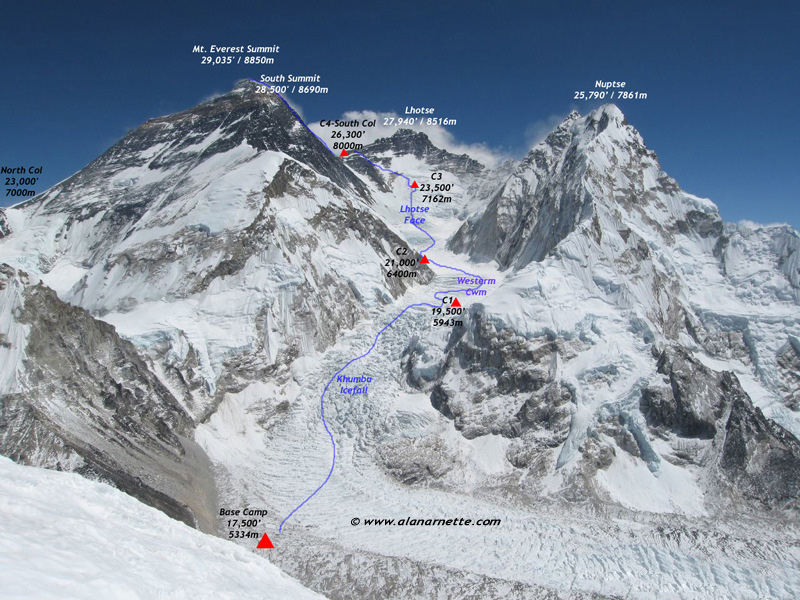

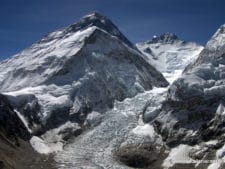
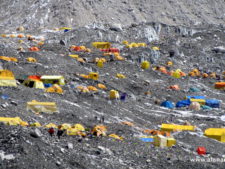
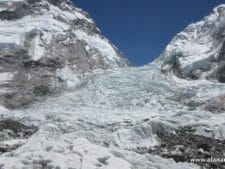
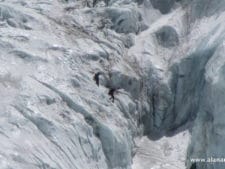
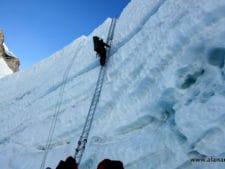
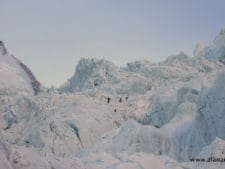
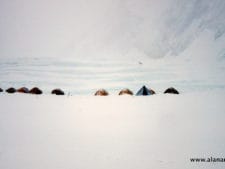
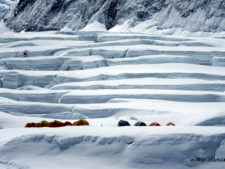
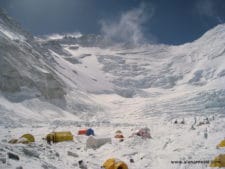
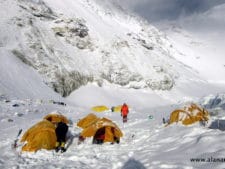
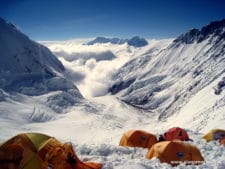
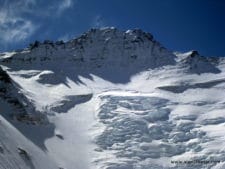
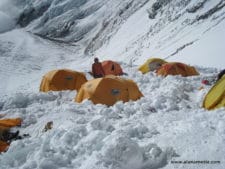
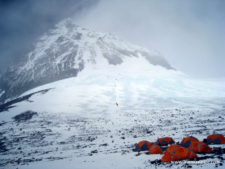
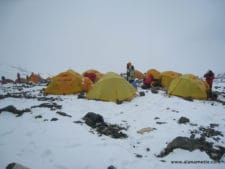
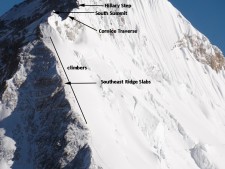
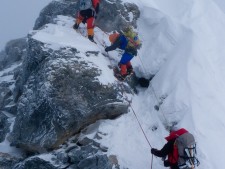
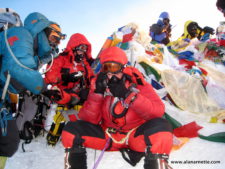
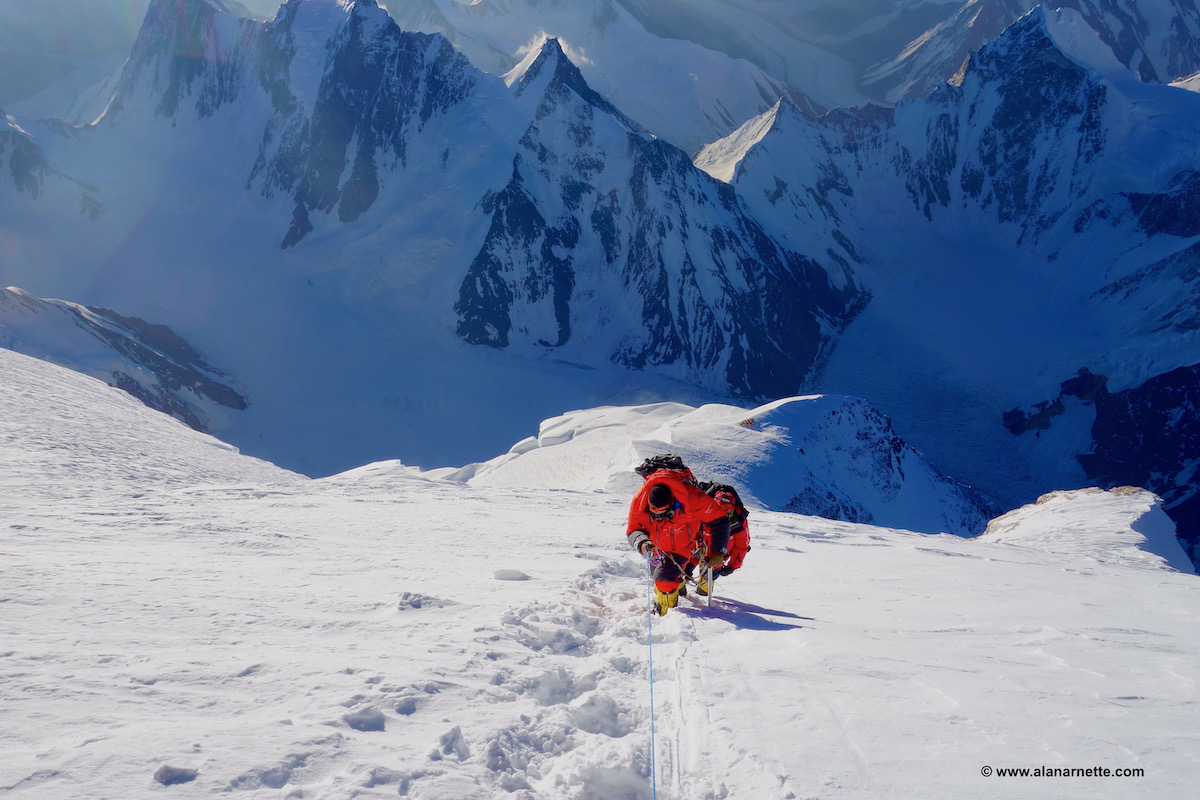

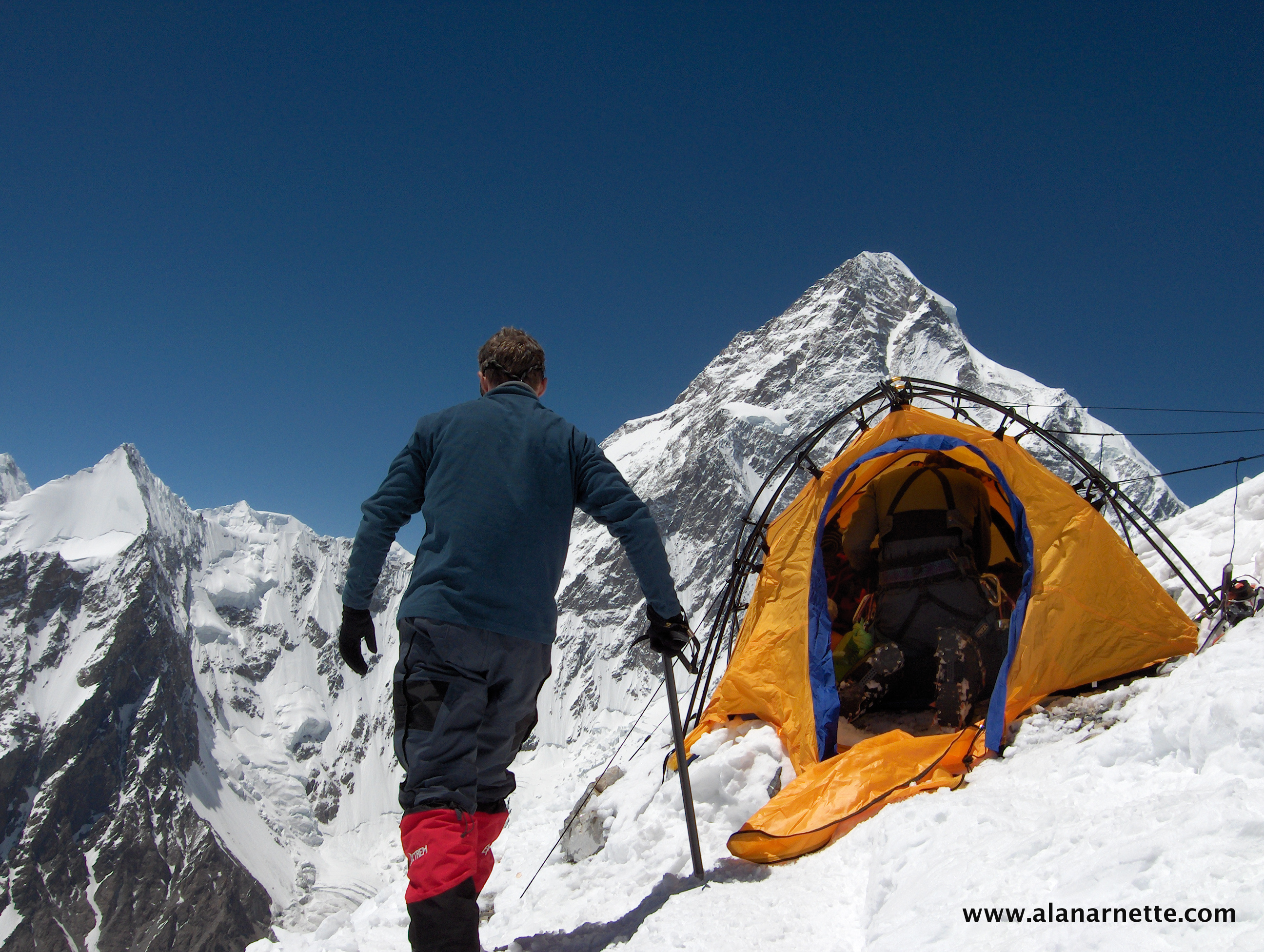
5 thoughts on “Everest 2024: Welcome to Everest 2024 Coverage”
I always look forward to Everest climbing season, and thoroughly enjoy our posts and podcasts! Thank you for your honest and well-researched updates!
It’s about time for me to thank you for your exciting and well-balanced reporting over the years. Not a climber, but fascinated by it, particularly Everest. As the season approaches I visit regularly to get the most accurate and timely coverage. As I slip into dementia myself, I salute you for dedicating your site to the memory of your mom and every day I am reminded that memories, indeed, are everything. Climb On!
Thanks David, this means a lot to me.
I’m looking forward to following another great year with your posts and interviews. It’s very exciting. Thanks for doing what you do
Thanks Erika!
Comments are closed.